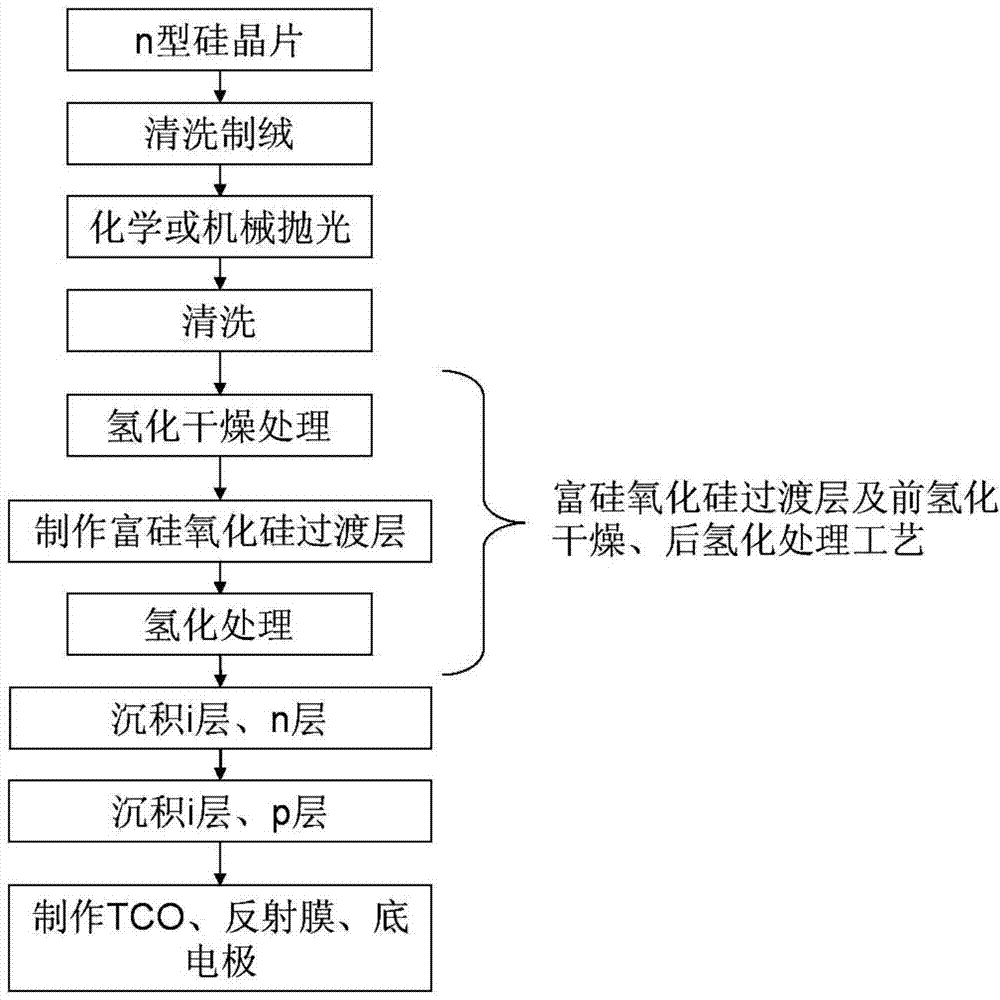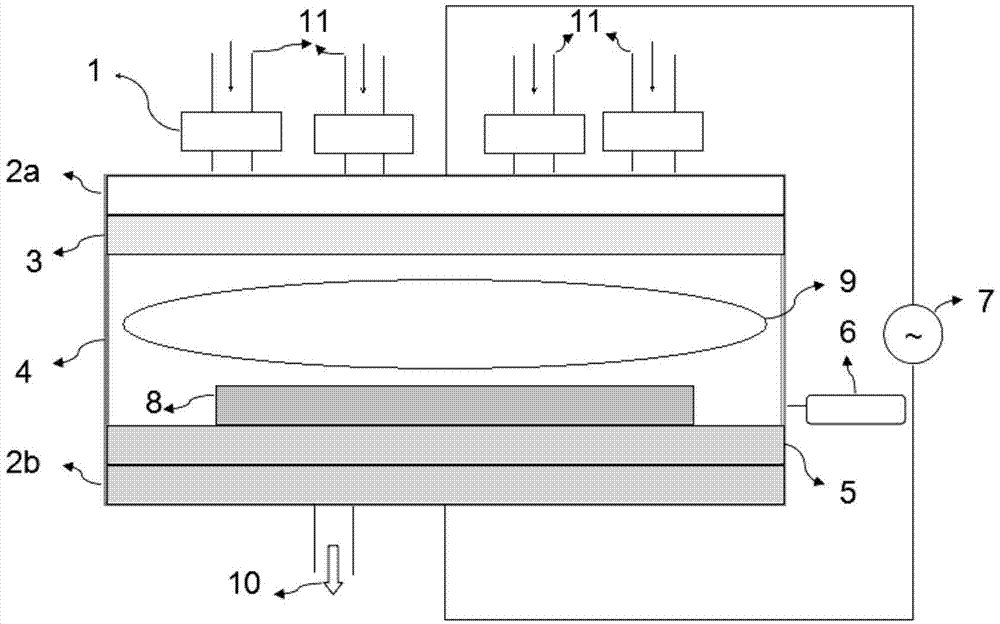Crystal silicon and silicon germanide film compound unijunction PIN solar battery with transition layer, and preparation method thereof
A solar cell and transition layer technology, which is applied in circuits, photovoltaic power generation, electrical components, etc., can solve the problems that no one has developed a thin-film solar cell manufacturing technology, and no one has developed a single-junction PIN solar cell manufacturing method.
- Summary
- Abstract
- Description
- Claims
- Application Information
AI Technical Summary
Problems solved by technology
Method used
Image
Examples
Embodiment 1
[0081] Crystalline silicon and silicon germanium thin film composite single-junction PIN solar cells with a transition layer structure, selected from one of the following solar cell structures:
[0082] 10) Bottom electrode / n layer / n-type silicon wafer / transition layer / i-A-Si 1-x Ge x layer / p-A-Si 1-x Ge x layer / TCO / anti-reflection coating;
[0083] 11) Bottom electrode / n layer / n-type silicon wafer / transition layer / i-μc-Si 1-x Ge x layer / i-A-Si 1-x Ge x layer / p-A-Si 1-x Ge x layer / TCO / anti-reflection coating;
[0084] 12) Bottom electrode / n layer / n-type silicon wafer / transition layer / p-A-Si 1-x Ge x layer / TCO / anti-reflection coating;
[0085] 13) Bottom electrode / n layer / transition layer / n-type silicon wafer / i-A-Si 1-x Ge x layer / p-A-Si 1-x Ge x layer / TCO / anti-reflection coating;
[0086] 14) Bottom electrode / n layer / transition layer / n-type silicon wafer / i-μc-Si 1-x Ge x layer / i-A-Si 1-x Ge x layer / p-A-Si 1-xGe x layer / TCO / anti-reflection coating;
[00...
Embodiment 2
[0097] The manufacturing method of the transition layer, such as figure 2 shown, including the following methods:
[0098] The first type: After preliminary cleaning, chemical texturing, chemical or mechanical double-sided polishing of the n-type silicon wafer, the n-type silicon wafer is cleaned again, and the cleaned silicon wafer is pre-hydrogenated and dried. The treatment method is as follows: : Send the silicon wafer to the equipment with a closed chamber, evacuate the atmosphere until the chamber pressure is less than or equal to (≤) 1Pascal; the chamber temperature is controlled between 30°C and 350°C, and hydrogen or a mixture of hydrogen and nitrogen is introduced gas; dry silicon wafers under a hydrogen atmosphere. The purity of hydrogen and nitrogen is greater than or equal to (≥) 99.99%; if a mixed gas is used, the volume ratio of hydrogen and nitrogen is 0.1 to 100 times; the hydrogenation drying time is 1 to 60 minutes. Send the hydrogenated and dried silicon...
PUM
| Property | Measurement | Unit |
|---|---|---|
| Thickness | aaaaa | aaaaa |
Abstract
Description
Claims
Application Information
 Login to View More
Login to View More - R&D
- Intellectual Property
- Life Sciences
- Materials
- Tech Scout
- Unparalleled Data Quality
- Higher Quality Content
- 60% Fewer Hallucinations
Browse by: Latest US Patents, China's latest patents, Technical Efficacy Thesaurus, Application Domain, Technology Topic, Popular Technical Reports.
© 2025 PatSnap. All rights reserved.Legal|Privacy policy|Modern Slavery Act Transparency Statement|Sitemap|About US| Contact US: help@patsnap.com



